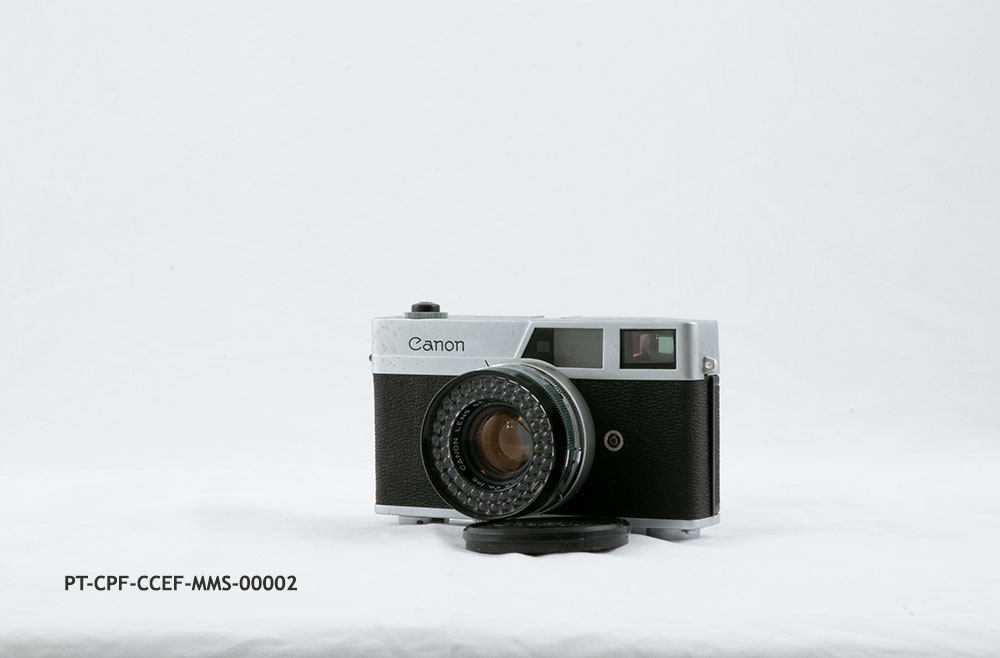Canonet, ca. 1961

Construtor Canon Inc., Tóquio, Japão
Coleção de Câmaras e Equipamento Fotográfico do CPF / Fundo Maria Madalena Serdoura, PT/CPF/CCEF/MMS/00002
© Centro Português de Fotografia/DGLAB/MC
No Ano Internacional da Tabela Periódica destacamos o elemento químico Selénio (símbolo químico Se), que foi descoberto pelo químico sueco Jöns Jacob Berzelius em 1817. O seu nome teve origem na deusa da lua da mitologia grega, Selene.
As células fotoelétricas de selénio são muito utilizadas na fotografia, mais especificamente nos fotómetros – instrumento que mede ou compara as intensidades da luz, utilizando os parâmetros de abertura do diafragma, distância ao objeto, velocidade de obturação e sensibilidade do filme, com vista à obtenção da exposição correta. Como estas células produzem uma pequena quantidade de corrente elétrica ao receberem luz, dispensam assim o uso de outras fontes de energia, como baterias ou pilhas, garantindo sempre o funcionamento do fotómetro que, nesta câmara, se encontra localizado em torno da objetiva.
In the International Year of the Periodic Table, this month we highlight Selenium (chemical symbol Se), which was discovered by the Swedish chemist Jöns Jacob Berzelius in 1817. Its name is associated with the Greek goddess of the moon, Selene.
Selenium photoelectric cells are commonly used in photography, specifically in photometers – instruments that measure or compare light intensities, using parameters such as aperture, distance to the object, shutter speed, and film sensitivity, to allow obtaining the correct exposure. Since these cells generate a small electric current when they receive light, they can replace other sources of energy, such as batteries, ensuring that the photometer is always ready to use. In this case, the photometer is wrapped around the lens itself.
Canonet, ca. 1961
Manufactured by Canon Inc., Tokyo, Japan
Camera and Photographic Equipment Collection/ Maria Madalena Serdoura Collection, PT/CPF/CCEF/MMS/00002
© Centro Português de Fotografia/DGLAB/MC